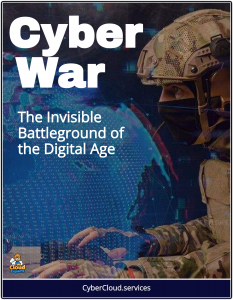The Cybersecurity Threat Russia Presents to the West: A Multifaceted and Evolving Challenge
From critical infrastructure attacks to espionage and disinformation campaigns, Russia’s cyber activities target the political, economic, and societal stability of the West.
 Russia’s cyber operations pose a persistent and sophisticated threat to Western nations, driven by strategic geopolitical objectives, advanced technical capabilities, and a hybrid approach that blends state-sponsored hacking with cybercriminal ecosystems.
Russia’s cyber operations pose a persistent and sophisticated threat to Western nations, driven by strategic geopolitical objectives, advanced technical capabilities, and a hybrid approach that blends state-sponsored hacking with cybercriminal ecosystems.
From critical infrastructure attacks to espionage and disinformation campaigns, Russia’s cyber activities target the political, economic, and societal stability of the West, particularly NATO countries and allies supporting Ukraine.
This article explores the scope, tactics, and implications of Russian cyber threats, drawing on recent intelligence and advisories, and provides actionable recommendations for mitigation.
Scope and Strategic Objectives
Russia’s cyber operations are a core component of its hybrid warfare doctrine, which integrates cyberattacks with information operations, economic coercion, and military actions. The primary objectives include:
- Undermining Western Support for Ukraine: Since Russia’s 2022 invasion of Ukraine, cyberattacks have targeted organizations facilitating aid to Kyiv, including logistics, defense, and technology sectors. The UK’s National Cyber Security Centre (NCSC) and the US Cybersecurity and Infrastructure Security Agency (CISA) exposed a campaign by GRU Unit 26165 (APT28) targeting these entities with spear-phishing, credential harvesting, and exploitation of Microsoft Exchange vulnerabilities (e.g., CVE-2021-26855) to disrupt supply chains and gather intelligence.
- Espionage and Influence: Russia’s SVR (Midnight Blizzard) orchestrated the 2020 SolarWinds breach, compromising U.S. government agencies and private companies for intelligence collection. This supply chain attack highlighted Russia’s ability to infiltrate high-value targets for strategic data, influencing policy and decision-making.
- Critical Infrastructure Disruption: Russia has a history of targeting energy, telecom, and financial sectors. The 2015 BlackEnergy and 2016 Industroyer attacks on Ukraine’s power grid and the 2022 Viasat satellite attack disrupted critical services, with ripple effects across Europe. These incidents signal Russia’s intent to destabilize Western infrastructure during conflicts.
- Disinformation and Societal Polarization: State-backed groups and aligned hacktivists, such as Killnet and XakNet, amplify cyberattacks with disinformation campaigns, targeting public trust in Western institutions. DDoS attacks on government websites (e.g., Italy, Czech Republic) and propaganda efforts aim to weaken resolve against Russian aggression.
Key Actors and Tactics
Russia’s cyber ecosystem comprises state-sponsored groups, cybercriminal networks, and proxies, enabling deniability and scalability. Key actors include:
- GRU (APT28, Sandworm): Specializes in destructive attacks and espionage, using wiper malware (e.g., NotPetya) and infrastructure targeting (e.g., Viasat). Tactics include spear-phishing, privilege escalation, and lateral movement via compromised credentials.
- SVR (Midnight Blizzard, Cozy Bear): Focuses on espionage, leveraging supply chain attacks (e.g., SolarWinds) and advanced persistent threats to maintain long-term network access.
- FSB (Turla, Berserk Bear): Targets government and defense sectors for intelligence, often exploiting zero-day vulnerabilities and custom malware.
- Cybercriminal Networks: Groups like Conti and LockBit, operating with state tolerance, deploy ransomware-as-a-service and innovate techniques that state actors later adopt. These networks also offer “violence-as-a-service,” blending cyber and physical threats.
Common tactics include:
- Phishing and Credential Harvesting: Spear-phishing campaigns, as seen in the APT28 logistics attacks, use tailored emails to steal credentials or deliver malware.
- Exploitation of Vulnerabilities: Unpatched software, such as Microsoft Exchange (CVE-2021-26855), is a frequent entry point for persistent access.
- Malware and Wipers: NotPetya and WhisperGate wipers cause data loss and operational disruption, while remote access tools like AnyDesk enable persistence.
- Cloud and IoT Exploitation: Attackers leverage cloud-based services to obscure activities and target IoT devices for network breaches.
- Disinformation Amplification: Cyberattacks often coincide with propaganda to maximize societal impact, as seen in DDoS campaigns paired with anti-NATO narratives.
Implications for the West
Russia’s cyber operations threaten Western security in multiple dimensions:
- Economic Impact: The NotPetya attack caused $10 billion in global damages, affecting companies like Maersk and Merck. Future attacks on financial or logistics sectors could disrupt trade and supply chains.
- National Security Risks: Espionage campaigns like SolarWinds compromise sensitive government data, undermining defense and foreign policy.
- Critical Infrastructure Vulnerability: Attacks on energy grids, telecoms, or transportation could cause physical disruptions, as seen in Ukraine, with potential cascading effects in NATO countries.
- Democratic Stability: Disinformation campaigns erode public trust, polarize societies, and weaken democratic resilience, particularly during elections or crises.
- Global Precedent: Russia’s tolerance of cybercriminals fosters a dangerous ecosystem where non-state actors enhance state capabilities, complicating attribution and response.
Future Outlook
Russia’s cyber capabilities will continue to evolve, driven by its strategic need to counter Western influence and maintain domestic control. Emerging threats include AI-driven phishing, deepfake-enhanced disinformation, and attacks on 5G and IoT infrastructure. The integration of cybercrime and state operations will further blur attribution lines, requiring agile Western responses.
International cooperation, as demonstrated by the NCSC, CISA, and allies, is critical to exposing and disrupting Russian campaigns. Investments in cybersecurity workforce development, public-private partnerships, and offensive cyber capabilities will enhance deterrence. However, the West must balance defensive measures with proactive strategies to hold Russia accountable, ensuring that cyber aggression carries significant consequences.
Russia’s cyber threats to the West are a dynamic and multifaceted challenge, combining advanced technical attacks with geopolitical objectives. From espionage and infrastructure disruption to disinformation and cybercrime, these operations demand a robust, coordinated response. By strengthening technical defenses, fostering international collaboration, and enhancing societal resilience, Western nations can mitigate the impact of Russian cyberattacks and safeguard critical systems and democratic values.



